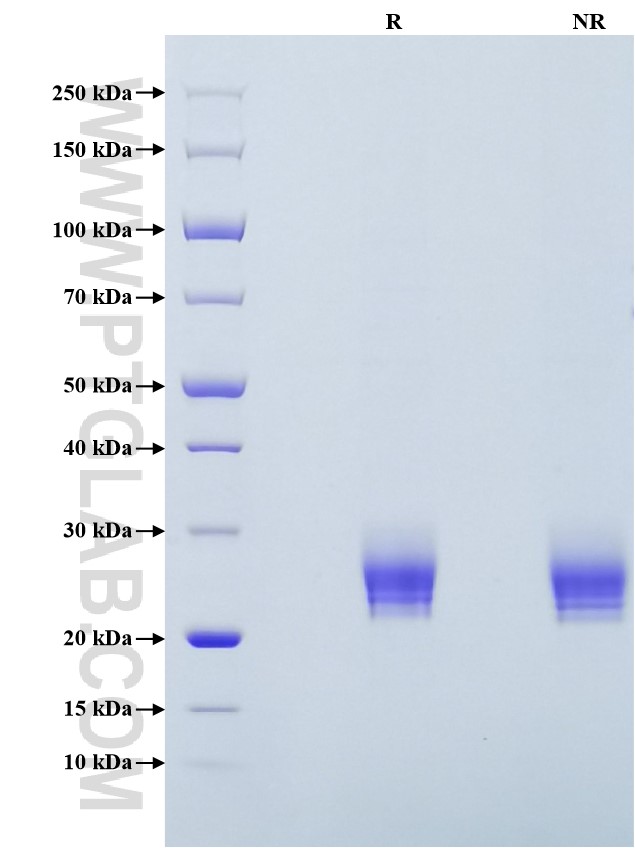Recombinant Rat IL-6 protein (His Tag)
种属
Rat
纯度
>95 %, SDS-PAGE
标签
His Tag
生物活性
EC50: 50-200 ng/mL
验证数据展示
产品信息
| 纯度 | >95 %, SDS-PAGE |
| 内毒素 | <0.1 EU/μg protein, LAL method |
| 生物活性 |
Immobilized Rat IL-6 (His tag) at 2 μg/mL (100 μL/well) can bind Rat IL-6R alpha (hFc tag) with a linear range of 50-200 ng/mL. |
| 来源 | HEK293-derived Rat IL-6 protein Phe25-Thr211 (Accession# P20607) with a His tag at the C-terminus. |
| 基因ID | 24498 |
| 蛋白编号 | P20607 |
| 预测分子量 | 22.5 kDa |
| SDS-PAGE | 22-26 kDa, reducing (R) conditions |
| 组分 | Lyophilized from 0.22 μm filtered solution in PBS, pH 7.4. Normally 5% trehalose and 5% mannitol are added as protectants before lyophilization. |
| 复溶 | Briefly centrifuge the tube before opening. Reconstitute at 0.1-0.5 mg/mL in sterile water. |
| 储存条件 |
It is recommended that the protein be aliquoted for optimal storage. Avoid repeated freeze-thaw cycles.
|
| 运输条件 | The product is shipped at ambient temperature. Upon receipt, store it immediately at the recommended temperature. |
背景信息
Interleukin-6 (IL-6) is an interleukin that acts as both a pro-inflammatory and anti-inflammatory cytokine. IL-6 protein is secreted by a variety of cell types including T cells and macrophages as phosphorylated and variably glycosylated molecule. IL-6 plays an essential role in the final differentiation of B-cells into Ig-secreting cells involved in lymphocyte and monocyte differentiation. It induces myeloma and plasmacytoma growth and induces nerve cells differentiation. IL-6 is also considered a myokine, a cytokine produced from muscle, and is elevated in response to muscle contraction. IL-6 has been shown to interact with interleukin-6 receptor and glycoprotein 130. Additionally, IL-6 is involved in hematopoiesis, bone metabolism, and cancer progression, and has been defined an essential role in directing transition from innate to acquired immunity.
参考文献:
1. Scheller J. et al. (1988). Behring Inst Mitt. Behring Inst Mitt. (83):40-7. 2. Heinrich PC. et al. (2003). Biochem J. 374: 1-20. 3. Rose-John S. et al. (2007). Expert Opin Ther Targets. 11: 613-24. 4. Ming JE. et al. (1989). J Mol Cell Immunol. 4: 203-11. 5. Febbraio MA. et al. (2005). Exerc Sport Sci Rev. 33:114-9. 6. J Appl Physiol. et al. (2005). J Appl Physiol. 98:1154-62.

